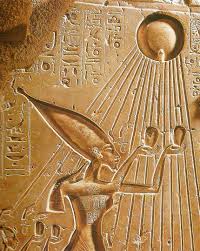
Amenhotep IV is one of the famous pharaohs of ancient Egypt and pioneer of Akhenaten religion. The name Akhenaten is (“he who is of service to the Aten” or “Effective Spirit of Aten”) where the chosen deity of Akhenaten’s worship was Aten, the Sun god. Akhenaten came to the throne of Egypt around 1353 BC.
Akhenaten parents were Amenhotep III and Tiye. and he was married to Nefertiti. He had an extensive family, which was well represented in the art from his reign. Akhenaten’s changed his original name from Amenhotep IV to Akhenaten. His wife, Nefertiti is now famous because of the beautiful bust of her found at Amarna.
The reign of his father, Amenhotep III, had been long and prosperous with international diplomacy largely replacing the relentless military campaigning of his predecessors. The reign culminated in a series of magnificent Jubilee pageants celebrated in Thebes (modern Luxor), the religious capital of Egypt at the time and home to the state god Amun-Re.
Being the son of Amenhotep III, Akhenaten inherited a prosperous and peaceful nation. He was crowned pharaoh with all of the usual flairs and began an apparently normal reign. It is thought that his father reigned as co-regent during the first few years, but this is disputed by some scholars.
Ancient Egypt Akhenaten Religion
It is believed that Akhenaten was the first Monotheist who may have been inspired by Moses or Joseph. However, it is by no means as simple as that. Akhenaten’s religion was not strictly monotheistic, it did center on one god, but by no means identical to the Israelites.
Pharoah Akhenaten had been raised, like many other famous Egyptian pharaohs to worship Amun. But he proceeded to make several important changes five years after he took the throne.
The Pharoah claimed that he was the only human being who could commune with Aten, the Sun God. He subsequently sealed the temples that had been dedicated by other ancient Egyptian pharaohs to the worship of Amun and outlawed the worship of Amun, barred the priests.